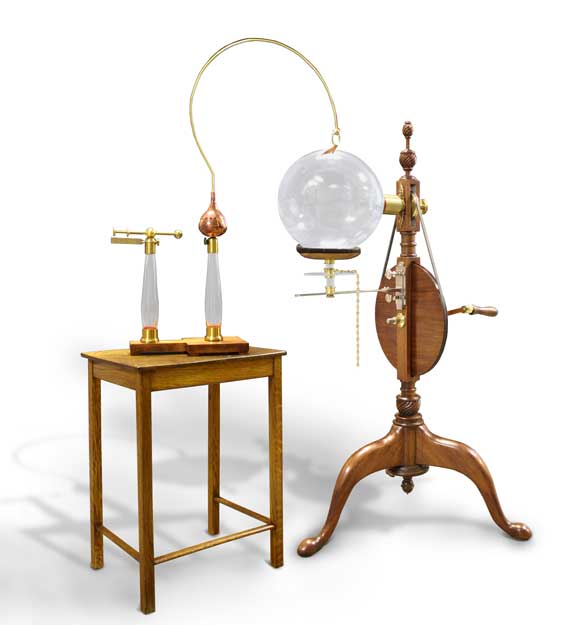
Benjamin began to be interested in electricity in 1745. At that time long glass tubes, about 3 feet, and about an inch to an inch and a half in diameter were rubbed either with a dry hand or with brown paper dried by the fire. There are two categories of electrical machines. These two categories are Friction and Influence. A friction machine generates static electricity by direct physical contact. Objects such as a glass sphere, a cylinder or plate is rubbed by a pad as it passes by. While influence machines produce charge with no physical contact. There are many scientists such as:
- Benjamin Franklin- Who developed the terms positive and negative. He wrote the book Experiments and Observations. In this book he “discusses the action of pointed conductors (i.e. the lightening rod), the use of lead as the inner coat of a Leyden Jar, and describes in detail his famous kite experiment.”
- Jean Antione Nollet- In 1745 he developed a theory. This theory was about electrical attraction and repulsion that questioned the existence of the flow of electrical matter between charged bodies.
- Allessandro Volta- He invented the Battery in 1800. He experimented with two different metals in a conductive environment. He also experimented with muscle spasms, he noted that these were the result of external electrical stimulation.

The Leyden jar was created through Pieter van Musschenbroek’s work in 1746. A Leyden jar is made of a glass jar with an outer and inner metal coating covering the bottom and sides. This metal coating nearly covers all the way up to the neck. Then there is a brass rod that ends in a knob that is external. The knob passes through a wooden stopper and is connected to the inner coating by a loose chain. Positive and negative charges accumulate from the two metal coatings when an electrical charge is applied to the external knob. As a result there will be equilibrium of charges until there is a discharge path provided. They were first used to store electricity when they were used in experiments and then they were used as a condenser when wireless equipment began to be invented
The electroscope was a device that was created by William Gilbert. It was originally called a versorium. It is a mental needle allowed to pivot freely on a pedestal. When charged bodies were brought near metal would be attracted to these charged bodies.
No comments:
Post a Comment